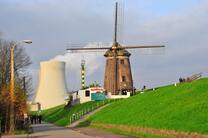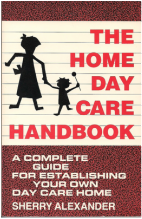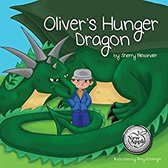 Photo by aladdin hammam
Photo by aladdin hammam To further her purpose in a logical manner, Vasquez uses declarative sentences to provide information and facts right at the beginning. For example, in lines five and six, she states, “Without people to fuel them, power plants stop providing electricity-within hours.” This statement is in agreement with author Richard Gary in his article, “What Would Happen in an Apocalyptic Blackout?” Gray writes, “When a power plant goes down, for example, it causes an abrupt spike in load on others on the network, which in turn slows down the generators at these plants and causes the frequency held on the grid to decrease. This risks destabilizing the delicate balance that electricity grids are held in, and operators have to deploy countermeasures rapidly – often within milliseconds – to prevent sections of the grid being cut off.” Since it is true that “operators” keep the power running, then Vasquez’s statement sets a logical premise for her opinions. However, logic alone is not enough to complete the picture the author is trying to create. She also needs to help them think about what she is saying, so she uses reason in the form of another rhetorical question. “But what happens later?” (Vasquez, 4).
Logic and reason are closely related, and it is this rhetoric technique that Vasquez uses to persuade her readers. Since her goal is to persuade readers to understand the consequences of a depopulated planet, she offers something readers can relate to emotionally and intelligently. “We use electricity to make toast and to power TVs and computers, but the absence of electric energy has huge effects . . .” (Vasquez, 6-7). Everyone can agree now that if electricity is cut-off then there are real life consequences. She continues adding reason chronologically in the following paragraphs after asking, “But what happens later?” She does this by presenting a situation in line 21, “Meanwhile, at nuclear power plants, the cooling ponds for spent fuel rods gets hotter and hotter.” While the reader might think they know the outcome, they may not be sure. The question of ‘What next?’ makes the reader ready to listen, and Vasquez gives them the answer. “Soon the water boils away, and the rods cause fires and release radiation into the air, where it is carried by the wind. Plants and animals in affected areas die.” (Lines 22- 24) The outcome of this event justifies the author’s position and persuades readers to think about her claim. Logic and reason are not the only two examples of the rhetoric Dolores Vasquez uses to persuade and inform. She also uses imagery.
In the author’s attempt to persuade and inform her readers, she paints mental pictures with her words to advance her perspective. She writes descriptive sentences and phrases such as “Dairy cattle die of thirst in their pens . . .”(Lines 15-16) and “Some sports stadiums become giant bat caves” (Lines 15-16; 31-32). Her descriptions carry a truth because dairy cattle would die if no one was there to feed and water them in an enclosed pen. In addition, it is easy to imagine large empty stadiums with no one there to maintain them becoming a habitat for birds and bats. Both sentences create a mental picture, or an image, readers can believe. Vasquez maintains this imagery throughout her article. In lines 38 and 39, she states, “. . . skyscrapers begin to tumble. Bridges fall. The hulks of cars and buses start to disintegrate.” The picture of a huge change to the modern world is complete, and the author has persuaded and informed readers of the consequences if people suddenly disappeared.
In conclusion, Dolores Vasquez’s use of rhetoric techniques such as logic, reason, and imagery in, “Life After People”, to appeal to readers through declarative sentences and descriptive phrases does advance her purpose to persuade and inform. It is clear that the author can visualize what would happen to our world if people disappeared, and she was able to share that perception by persuading readers to visualize it too.





 RSS Feed
RSS Feed



